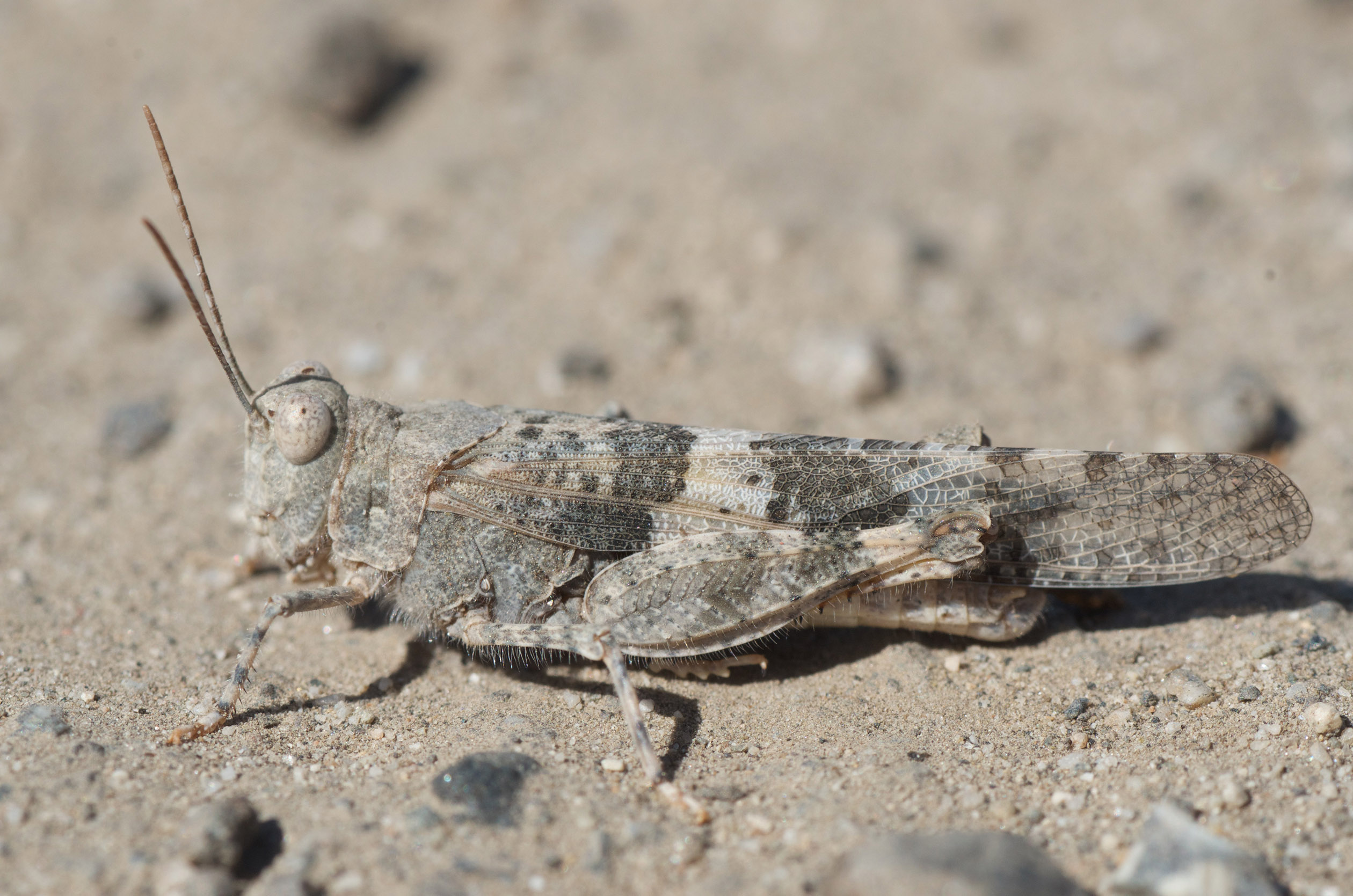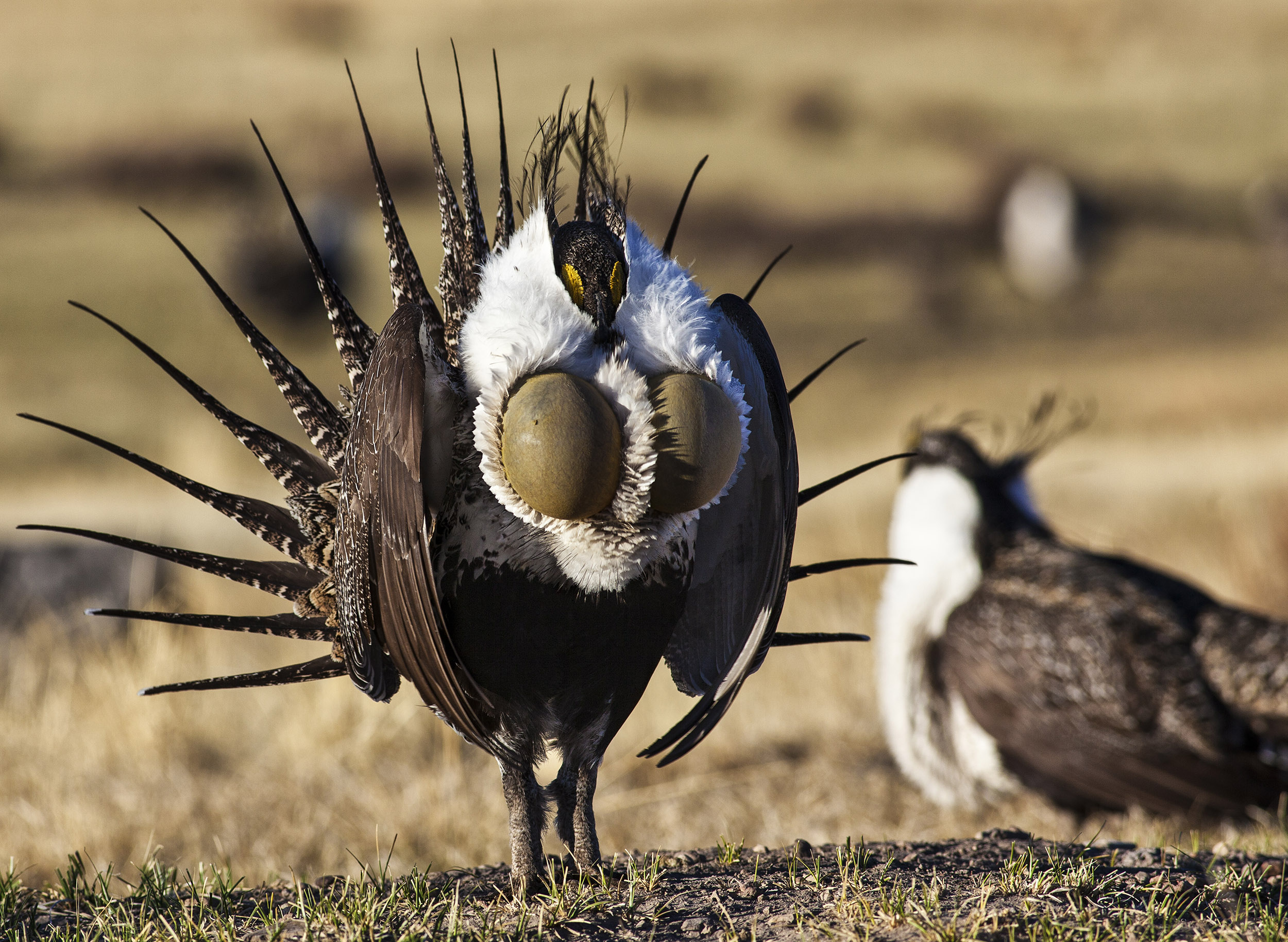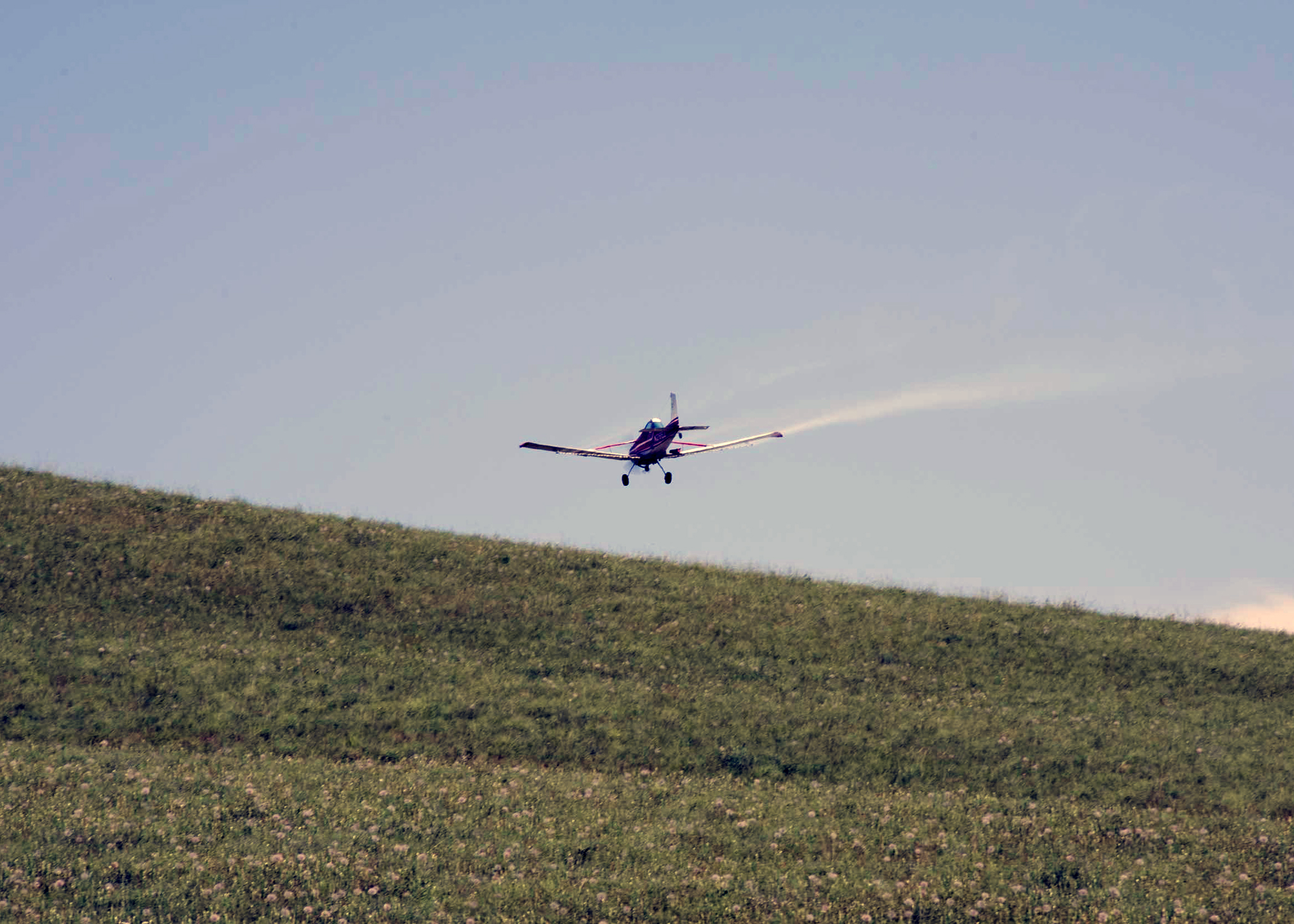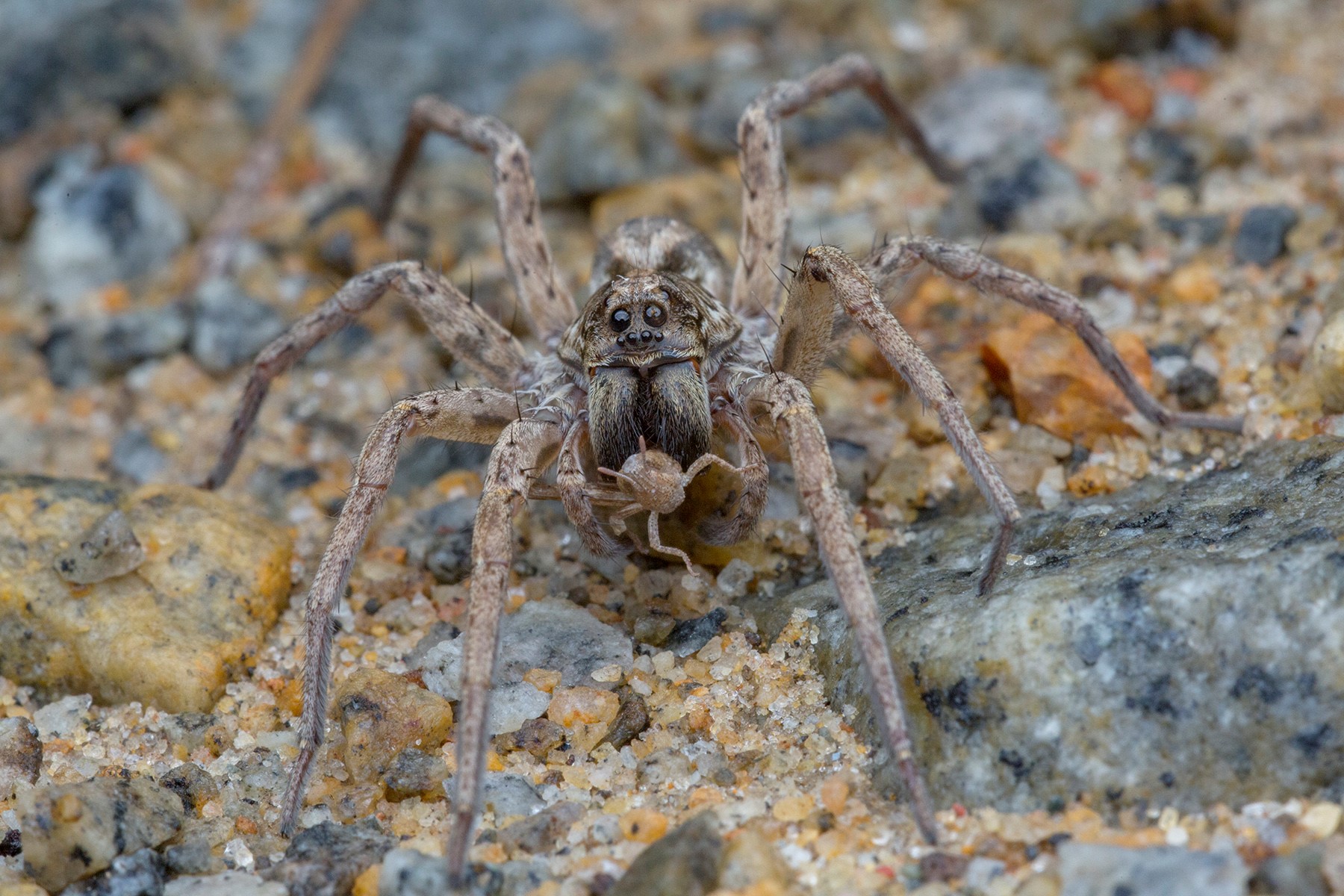In her book On the Banks of Plum Creek, Laura Ingalls Wilder memorably chronicles a locust swarm overrunning her family’s farm. That swarm of Rocky Mountain locusts, in 1874, is thought to be the largest in recorded human history. In Nebraska, a meteorologist named Albert Child calculated the extent of the cloud of insects at 110 miles wide, 1,800 miles long, and a quarter to a half mile in depth. Contemporaneous accounts report farm fields being stripped, wool being eaten from the back of sheep, and even bark and paper being consumed.
Despite this and other incidents which loom large in historical accounts, most grasshoppers live alongside people without conflict. Only about a dozen of the approximately 400 species of grasshoppers found on western rangelands have the potential to reach densities capable of causing economic damage—and even then only under certain circumstances. As in grasslands around the world, grasshoppers of America’s rangelands comprise an important component of the insect fauna and ecology.

Swarms of the pallid-winged grasshopper (Trimerotropis pallidipennis) were spotted over Las Vegas in 2019. Although they caused little to no damage, the large swarms aroused fear in some people. (Photo: Jon Sullivan, Flickr.)
Usually considered competitors with livestock for forage, grasshoppers can actually be beneficial to rangelands by affecting plant composition, and even influence the soil microbial communities. They can boost grassland productivity, i.e., increase the amount of plant growth, by speeding up the process of nitrogen recycling when they feed on plants that are slow to decompose; their frass (droppings) decompose much more easily. Some grasshoppers consume weeds.
Grasshoppers also play a critical role in the grassland food web. Numerous grassland birds, including declining species such as sage-grouse, Swainson’s hawk, long-billed curlew, and sage thrasher, rely on grasshoppers for food. Spiders and other invertebrate predators, as well as mammals and reptiles, also feed on grasshoppers. Because grasshoppers evolved in these ecosystems and play an important role, the relationships between grasshoppers and other species need to be considered more deeply in grasshopper management.

Grasshoppers are important food items for the greater sage-grouse (Centrocercus urophasianus). (Photo: Bob Wick / BLM.)
The Problem with Relying on Density as an Indicator
The Animal and Plant Health Inspection Service (APHIS), a federal agency, is charged with suppressing outbreaks of grasshoppers and Mormon crickets. Until the 1950s, suppression was mostly aimed at private croplands, but increasingly APHIS has targeted its efforts on federal and state-owned rangelands.
Each year, APHIS or its cooperators survey the landscape for adult grasshoppers and create a hazard map based on grasshopper density. However, the density of grasshoppers is only a meaningful indicator for potential damage within the specific ecological context. For example, when the vegetation is sparse and growth is limited, low grasshopper densities may cause considerable damage. In other areas with abundant plants and rapid growth, high grasshopper densities may result in little to no damage.
The upshot is that even high densities may not result in an “outbreak” and may not warrant use of insecticides, which are mainly applied through aerial sprays. Predicting the scale and scope of outbreaks is still a very murky science, especially when grasshopper counts lack species composition information. Grasshoppers often occur in mixed species assemblages, but typically only certain species cause economic levels of damage.
Sweep netting is a survey technique used to determine the densities of grasshoppers. For data to be useful, counts should include species composition. (Photo: Xerces Society / Angela Laws.)
Insecticides Used to Suppress Grasshoppers
Despite the inability to tie grasshopper densities to the potential for damage, APHIS annually deploys planes and ground crews to treat against grasshoppers on higher density sites. Insecticides are sprayed every summer, but this summer, the area treated—some 750,000 acres—was significantly larger than normal. Several treated blocks measure more than 100,000 acres, an area equivalent to 156 square miles of land. In 2020, most treatment blocks were located in Montana, Wyoming, and Idaho.
While a wide variety of insecticides have been used over the years, currently APHIS relies mostly on diflubenzuron, an insect growth regulator (often sold as Dimilin). This suppresses the creation of chitin, the main component of the insect exoskeleton, in juvenile insects, thus preventing their maturation into adults. APHIS also uses bait laced with carbaryl (commercially known as Sevin) in some locations, and recently approved the use of a relatively new insecticide, chlorantraniliprole (Prevathon), which is considered to be of low toxicity to bees, but there is conflicting evidence on its toxicity for bumble bees.

Government-contracted plane dispersing insecticide over rangelands. (Photo: USDA, Flickr.)
The Downsides of Control
Although APHIS considers the risk to pollinators and other nontarget wildlife insignificant, we do not. During application, APHIS divides the area into alternating swaths of treated and untreated rangeland. These are nominally 100 feet wide, but vary with the type of aircraft. The insecticides can be released as high as 75 feet above the ground. In addition to the harm caused to bees and butterflies in the swaths that are treated, insecticides can drift a long way into the untreated swaths. The species put at risk include several that we are concerned about already due to their diminished populations, including the western bumble bee (Bombus occidentalis) and the monarch (Danaus plexippus), both of which rely on western rangelands. And the insecticide’s effects are potentially affecting a wide range of arthropods, including the beneficial insects that normally keep grasshoppers in check. In fact, relying on insecticides for grasshopper suppression could make things worse, something that respected researchers warned about more than 20 years ago:
“Grasshopper control might provide short-term relief but worsen future problems … Pesticide applications that reduce grasshopper numbers could also reduce natural enemy numbers directly by outright poisoning of the invertebrate natural enemies, or indirectly by lowering the numbers of vertebrate predators as their invertebrate prey are reduced. Therefore, the ultimate result of control efforts could be an increase in grasshopper numbers for the future, as they are released from the control of natural enemies.”
And notably, this was in a handbook published by APHIS.
On rangelands, the cost of insecticide application often doesn’t even make economic sense given the low value of each acre for cattle forage. Other options, such as leasing additional rangeland, selling livestock or buying hay, may be more economical alternatives. APHIS is supposed to consider the economic tradeoffs when making treatment decisions, but the agency doesn’t make these calculations public. Grazing on federal rangelands is also currently heavily subsidized, and it’s not clear how this is taken into account.
Learning to better understand how to minimize outbreaks using nonchemical methods is a more sensible strategy. Many studies have been published over the years showing the potential for appropriate grazing management and prescribed fire to suppress outbreaks. These tools need more research, demonstration, and support from land management agencies.

Spiders, beetles, flies, wasps, and ants are some of the natural enemies that usually keep grasshopper populations in check. (Photo: Budak, Flickr.)
Pushing for Change
Twenty years ago, advocacy efforts by Xerces prevented spraying on millions of acres of western rangelands, and we continue to push for changes in grasshopper management. Some of our current and planned actions are:
- Letting APHIS know of our concerns and recommendations through numerous comment letters.
- Identifying at-risk pollinators that could be affected.
- Developing best management practices guidance for private rangelands to help ranchers manage in ways that prevent outbreaks.
- Getting the word out to our supporters and allies.
There are steps you can take as well (in addition to following Xerces’ blogs and social media!). Do you want to know what’s happening in a particular area? Contact the APHIS state plant health director in your state of interest to find out what their plans are. Let them know your concerns about insecticide use for grasshoppers, and ask to be included in future announcements about grasshopper management, including treatment plans and decisions.
And the locust species that devastated the Ingalls’ farm and so many others? The Rocky Mountain locust was extinct by 1902, destroyed not by pesticides but by habitat lost to the plow. It underscores the fact that even a species that once numbered in the trillions can quickly disappear. We shouldn’t be risking such a fate for other native grasshoppers—and other species inhabiting the same landscapes—with indiscriminate and routine pesticide use.
Further Reading
Read more about the ecology and control of grasshoppers in the fall 2008 issue of our magazine Wings
Find detailed conservation guidance from Xerces scientists in Best Management Practices for Pollinators on Western Rangelands.
Read The Past, Present, and Future of Rangeland Grasshopper Management in the April 2000 issue of Rangelands.
Browse APHIS’s Grasshopper Integrated Pest Management User Handbook




